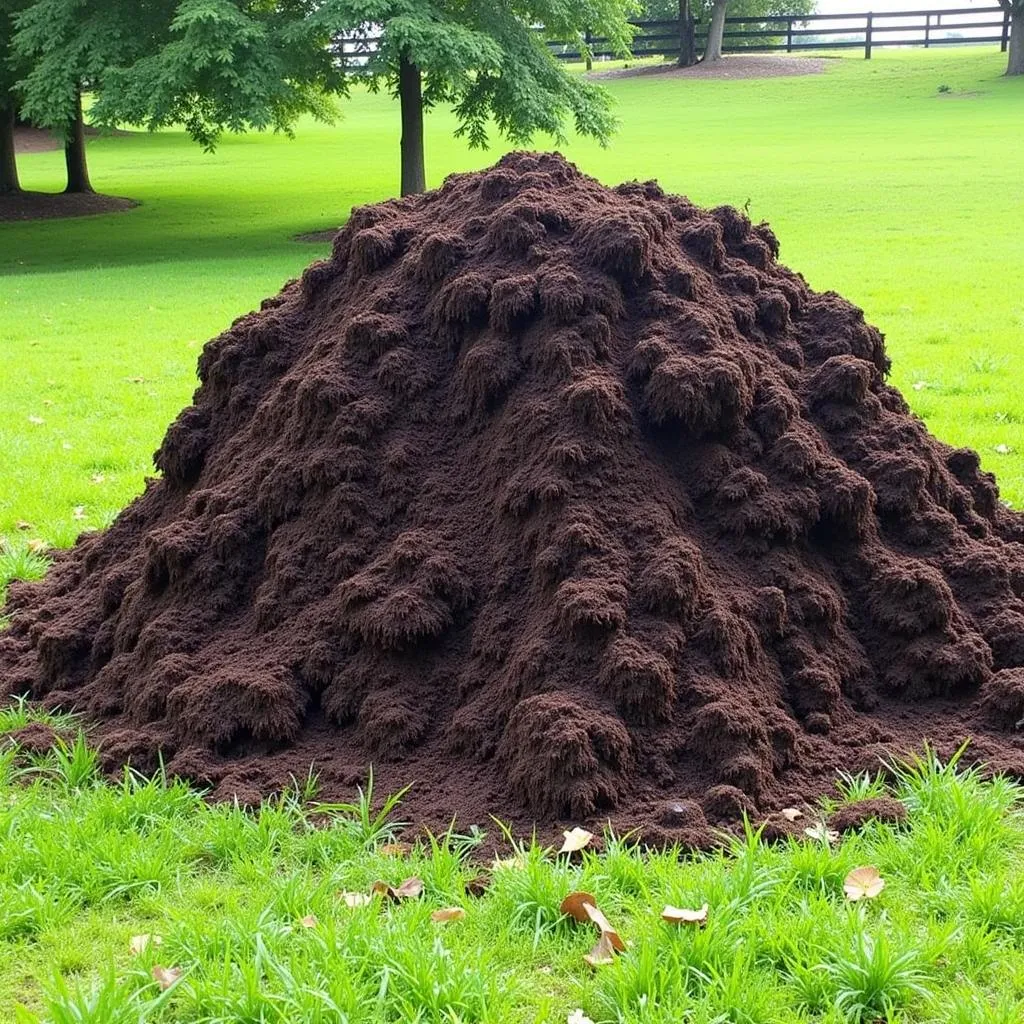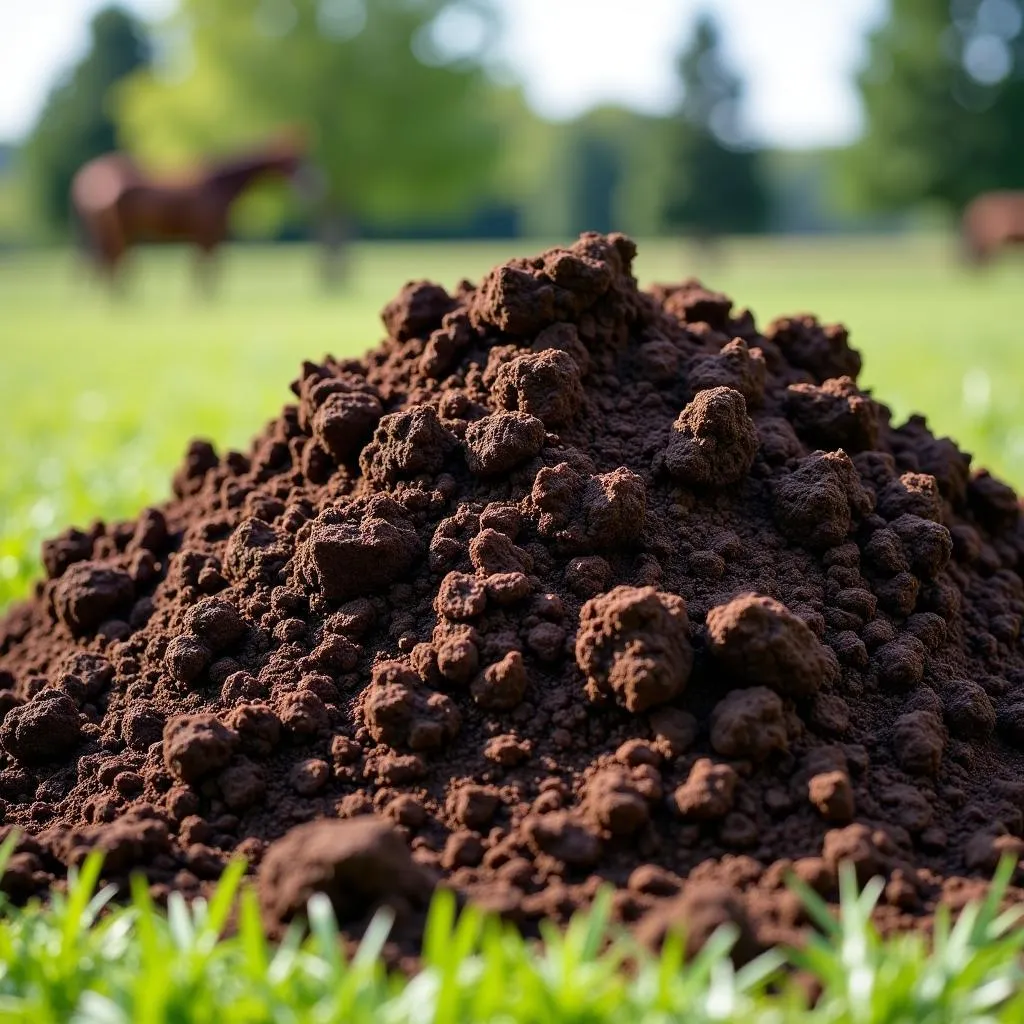Horse manure on a lawn. It’s a sight that can spark debate among homeowners. Some tout its benefits as a natural fertilizer, while others cringe at the potential for weeds and odor. So, which is it: friend or foe? The answer, as with many things in life, is a bit more nuanced than a simple yes or no.
Understanding Horse Manure and Its Impact on Lawns
Horse manure, unlike that of dogs or cats, is largely made up of digested plant matter. This makes it a potentially rich source of essential nutrients like nitrogen, phosphorus, and potassium – the holy trinity of lawn fertilizers. When applied correctly, composted horse manure can improve soil structure, enhance drainage, and contribute to a lush, healthy lawn.
However, uncomposted horse manure can be a different story. Fresh manure can contain weed seeds, parasites, and pathogens that could harm your lawn and even pose health risks to humans and pets. Additionally, it can burn your lawn if applied directly due to its high nitrogen content.
Turning Horse Manure from Foe to Friend: The Composting Process
 Composting horse manure in a pile
Composting horse manure in a pile
The key to harnessing the benefits of horse manure for your lawn lies in composting. Composting is a natural process that breaks down organic matter, like manure, into a stable, nutrient-rich material. Here’s a step-by-step guide to composting horse manure:
- Gather your materials: You’ll need a designated composting area, ideally with a compost bin or pile.
- Layer it up: Alternate layers of horse manure with carbon-rich materials like straw, leaves, or sawdust. This balance is crucial for proper decomposition.
- Water regularly: Keep the compost pile moist, but not soggy.
- Turn it over: Regularly turning the pile aerates it and speeds up the composting process.
Depending on factors like temperature and moisture, composting can take anywhere from a few months to a year. The finished product should be dark brown, crumbly, and earthy-smelling.
 Composted horse manure ready for lawn application
Composted horse manure ready for lawn application
Applying Composted Horse Manure to Your Lawn
Once your compost is ready, it’s time to reap the rewards. Here’s how to apply it to your lawn:
- Timing is key: Fall is the ideal time to apply composted horse manure, as it allows the nutrients to seep into the soil over winter and be readily available for spring growth.
- Less is more: Apply a thin layer, about half an inch thick, evenly across your lawn.
- Water it in: After application, water your lawn thoroughly to help the nutrients penetrate the soil.
Potential Drawbacks and Considerations
While composted horse manure offers numerous benefits, it’s crucial to be aware of potential drawbacks:
- Weed seeds: Even composted manure may contain some weed seeds. Regularly mowing and maintaining your lawn can help manage this.
- Odor: Fresh manure, even in small amounts, can be quite pungent. Composting significantly reduces odor, but it may still be noticeable, especially during application.
- Over-application: While rich in nutrients, too much of a good thing can be harmful. Over-applying manure can lead to nutrient imbalances in the soil.
Expert Insight
“Many people are surprised to learn that horse manure, when composted properly, can be a fantastic natural fertilizer for their lawns,” says John Miller, a seasoned gardener and landscaping enthusiast. “It’s all about understanding the process and taking the right steps to ensure safety and efficacy.”
 Lush green lawn fertilized with horse manure
Lush green lawn fertilized with horse manure
Conclusion
So, is horse manure a friend or foe to your lawn? The answer lies in responsible management. By understanding the importance of composting and following proper application guidelines, you can harness the power of this natural resource to cultivate a healthy, thriving lawn. Remember, turning horse manure from foe to friend requires a little effort, but the rewards are well worth it. For personalized advice on using horse manure on your lawn, contact us at Justus Horses USA. Our team is ready to help you achieve your lawn care goals.